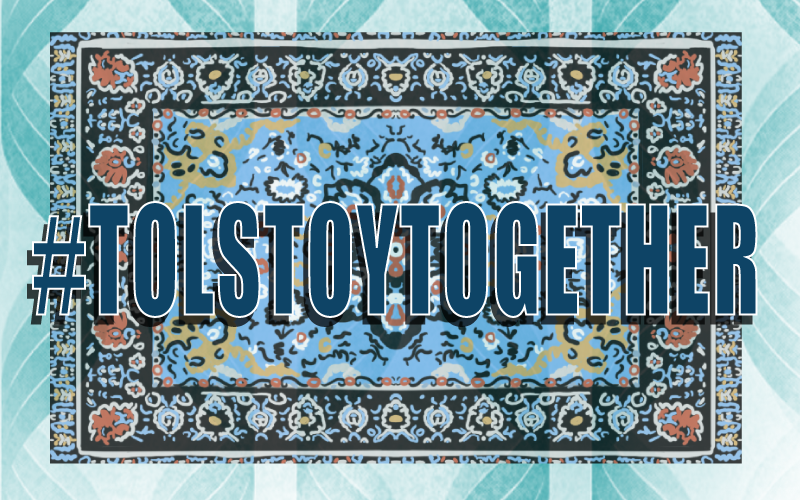Maybe you have had the experience, during the long caesura of COVID-19, of taking an online course. Each week, at a designated time, you would place yourself in front of a monitor emitting its eerie clamshell glow and try to pay attention to an instructor reciting some prompts for discussion. Making eye contact was always hard: you were never sure where to train your gaze and even if it was reciprocated, how could you be sure it was not actually directed at another of the miniaturized, decapitated heads on screen? There were, of course, ways to be overtly interpellated: the chat box allowed you to send messages to other student participants and to the “host,” a designation that felt cosmically prankish and uncanny. After three hours — and only one “homeostatic break” —you would wearily hover your mouse over the “chat” function and save the transcript before the session ran out the clock. At some point in the future, you told yourself, you would revisit the log, and marbled expressions from classmates you had been too exhausted to pick up on the first time would assert themselves with fresh lucidity. But first, to bed to retire.
Tolstoy Together: 85 Days of War and Peace with Yiyun Li replicates the feeling of reading such a transcript — minus the vagaries of Zoombie land. It is a decidedly pandemic project that has already taken on the aura of a time capsule. The book traces its origins back to March 2020, when parts of the world were starting to grind to a conspicuous halt. Together with the literary magazine A Public Space, the author Yiyun Li proposed starting a reading group that would pace itself through War and Peace over the leisurely course of three months — “to experience a novel of multitudes with a multitude of minds,” as Li wrote. Part of the appeal was its flexibility in tackling a sprawling work with hundreds of characters: read 15 pages each day, consult Li’s reading notes (posted on social media), and chime in with thoughts at any time on Twitter or Instagram with the hashtag #TolstoyTogether. Not daunting at all, right?
When I learned that #TolstoyTogether would be delivered between two covers, it felt like an amnesty and a chance at redemption: I was defeated by War and Peace when I hastily “read” it for a college course a few years back, so I seized the opportunity to have another determined go at the “loose, baggy monster.” With Li as my Virgil, I would read it in bite-sized chunks. To read in this way, I found, was like intermittent fasting: a heart-healthy approach that, in restricting the amount of prose I would consume each day, helped me better savor the novel at the level of craft. Or, to misquote Kafka, it was the ice-axe to break the frozen sea of War and Peace for me.
The table of contents may be the only thing out of joint in the entire compendium. It gives the false impression that the book is comprised of six essays by professional critics and writers, which gave me pause: “Was this just a glorified literary journal?” There’s no indication, up front, of the range and diversity of views to follow: the total number of contributors approaches a Tolstoyan asymptote at 162 souls — 164 including Li and her co-pilot Hughes. The boldfaced essays, then, are red herrings. No longer than one or two pages each, they function as relatively extended meditations on Russian classical music, Persian carpets, the sky’s transporting mysticism, and the domestication of dogs and wildness in the novel. They are not quite signposts or interludes and the fact that each of them could have swapped places with one another gives a sense of this work’s protean and boundaryless quality. Make it past the table of contents, though, and one discovers a book with a more scattershot and sinuous sensibility.
The art historian Ernst Gombrich once wrote: “Important as was the art of describing, the art of thinking also needs its defenders.” This gets to a core strength of Tolstoy Together. The book presents and re-presents — in a wonderful economy of style — passages from War and Peace and deposits them next to tantalizing fragments of thought from writers like Garth Greenwell, Esme Wang, and Jorie Graham as well as Army veterans, lawyers, librarians, and singers (the quotient of writers in the group is, unsurprisingly, high). References to Winnie the Pooh, Rebecca West, and Kierkegaard sit democratically side by side. Li’s notes — originally posted on Twitter and Instagram, those abbreviators of attention — are sparse and assume a Beckettian quality on the printed page. Many of her entries are no longer than one or two sentences. Even in their compression, they exhibit a delightful range of registers, from the wry epigram (“In every party, there is an unnecessary and inconvenient guest”) to the haunting elegy (“Children lost on the battlefield remind one of infants falling into sudden sleep in the middle of a crying bout”) to the confession (“I only sing when no one is listening and it is absolutely unnecessary to utter any sound”).

In Tolstoy Together, each reading day is recounted in four pages and follows a set pattern: on the verso page, you have some thoughts from Li, appealingly presented as notebook entries from your most well-read and erudite friend, and on the recto are staccato bursts of provocations, questions, and all manner of insight from fellow travelers. If, like me, you missed out on Tolstoy Together 1.0, the effect is not unlike overhearing some dishy gossip about a party you missed.
If this all sounds like a generous invitation, it is — though it carries a caveat. When academics approach a beloved work, they sometimes cast a protective lampshade over it, sealing off some of its luster from others in an excess of scholastic zeal. In her preamble, Li notes, with perhaps a touch of the ludic: “This is not a book for [critics].” How seriously are we to take this? An image appears, unbidden, of a former college professor in the customary tweed jacket waxing on about Tolstoy’s use of psychological ventriloquism. What would he have made of this book? True, there are no footnotes citing Slavic Review and the book is unencumbered by an index, in case one wants to look up Tolstoy’s use of litotes (page 156) or descriptions of smiles (pages 64, 65). Yet, I like to think there is something here for even the most squeamish of scholars.
While thematic coherence proves elusive — and it may have been wise of the editors not to ham-fistedly reach for it — we have instead a work that operates by echolocation: an entertaining miscellany of personal anecdotes, close reads, contextual clues, and trivia that reinforce and refute each other in playful turns. Disagreements, when they appear, are never sustained for longer than three or four lines, as when poet and critic Dan Chiasson approves the decision made by translators Pevear and Volokhonsky to preserve the French in the novel and author Carl Phillips comes back with a rejoinder about linguistic choppiness. There is an ineradicable contingency to all reading experiences — perhaps pronounced by COVID — that Li teases out and, to her credit, never interferes with.
Part of the beauty — even luminosity — of the book is that one never feels berated for “falling behind” on a day’s reading, as one might in a typical seminar, or for making a wayward observation. As one former professor once put it to me: deadlines should be taken for what they are — dead. Waywardness here can be a catalyst for fecundity, as when Li glosses La Rouchefoucauld and reflects: “these chapters after Andrei’s death and Petya’s death hurt one’s mental retina,” precipitating a swarm of entries on mourning and spiritual wounds. I mean to say that one will almost certainly feel goaded by these entries to finish each day’s prescribed reading “on time,” but such encouragement is an altogether different feeling from the soul-shriveling that tends to accompany a graded assignment. Anyone who has ever been a student will be familiar with the kind of white-knuckled rush that passes for reading and that often precedes the writing of a term paper. You gallop through a book, searching for examples in support of a thesis and blithely ignore passages of “uncommon sense” and “common nonsense,” to reuse two phrases that Li does her best to rehabilitate. Tolstoy Together advocates a more languorous approach: decelerate and pay closer attention. Almost like a safety warning, it wants to remind readers that objects in the novel are not exactly as they appear.
If the “Internet novel” or “Instagram novel” are ascendant genres in today’s literary marketplace, Tolstoy Together is an impressive nonfiction cousin. It sits merrily on the fence between a type of collective criticism and a commonplace book filled to bursting with clever ruminations and quotations. It also deftly strikes a balance between specificity and universality that Tolstoy, that preternatural truth-teller, would have approved of.
Without Tolstoy Together, I’m not sure I would have given War and Peace another chance. I’m glad I did so; as Li writes, “Sometimes a book is only waiting for us to experience more of life to understand it better.”•




